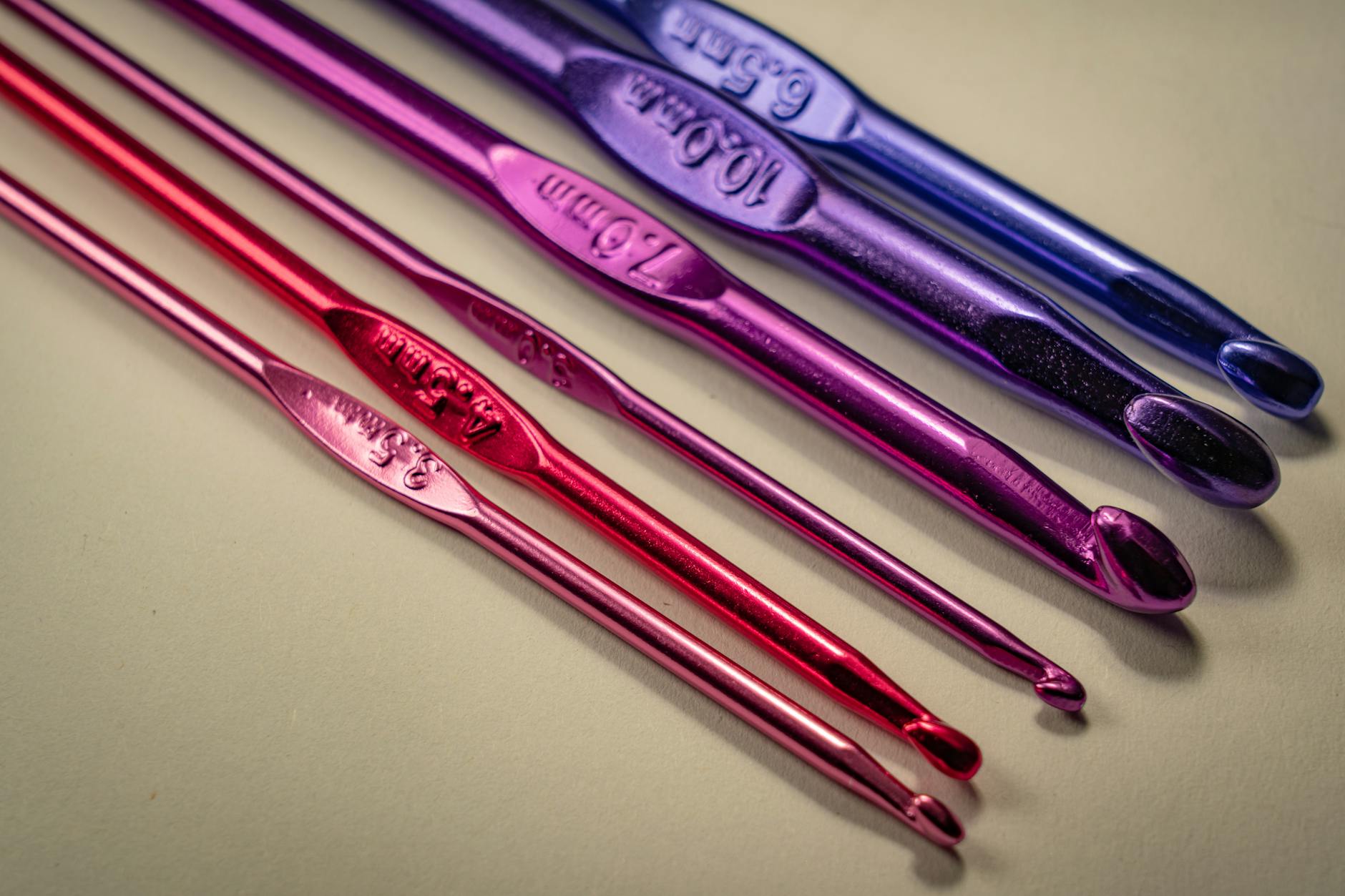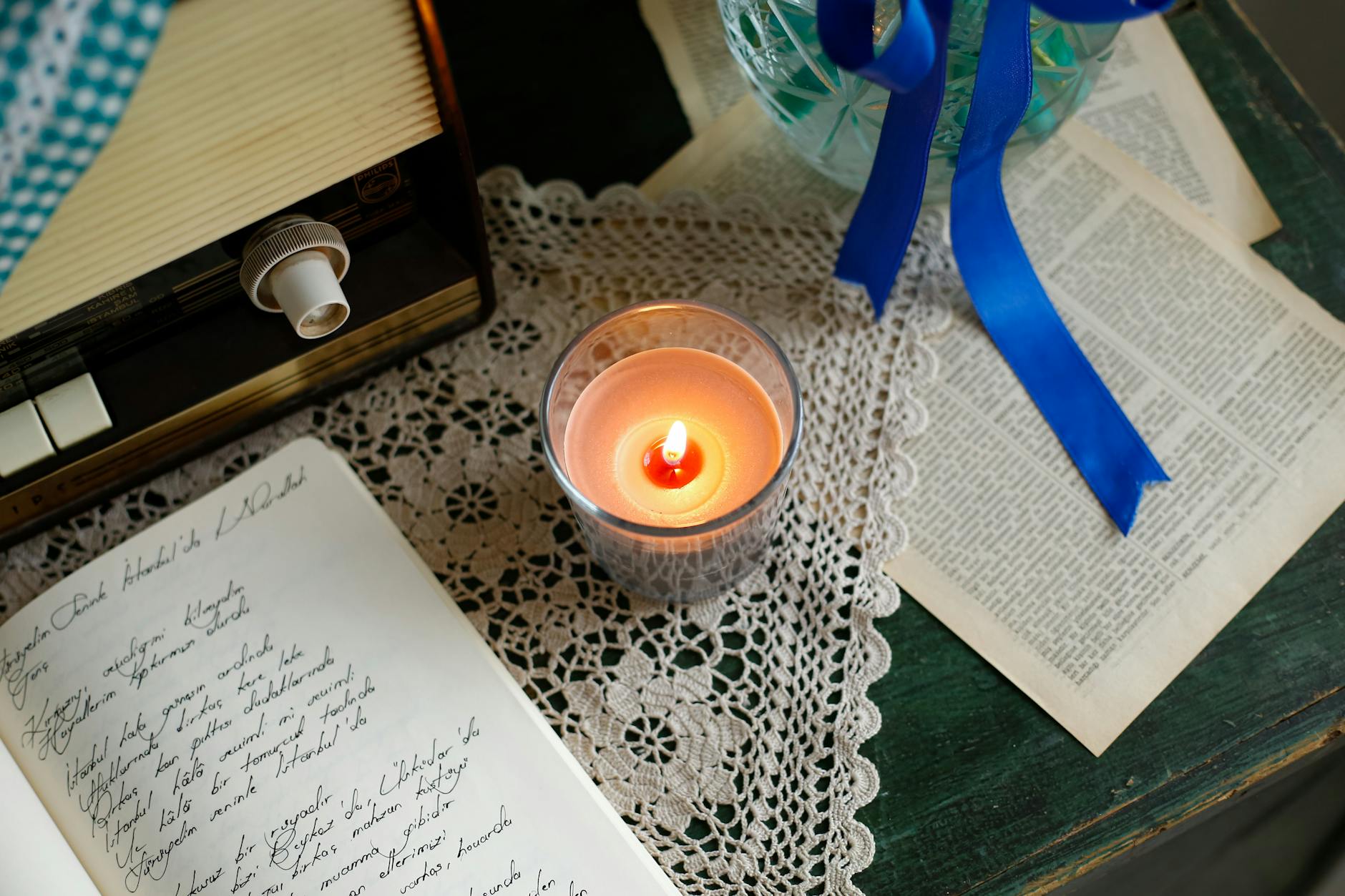
US vs. UK Crochet Terms Explained: Simple Guide for All Crocheters!
If you've ever followed a crochet pattern and realized your stitches don't look quite right, you're not alone. The difference between US and UK crochet terminology has tripped up many a crocheter, both new and experienced. The stitches may have the same names, but they create entirely different results depending on the region. Understanding these differences isn't just helpful; it's essential if you want your projects to turn out as intended. Whether you're picking up your first hook or have been crocheting for years, recognizing the terminology can save time, confusion, and yarn.
For a helpful video explanation, check out Crochet Abbreviations Quick Guide - US and UK terms.
The Basics of Crochet Terminology
When starting your crochet journey, it’s essential to understand the terminology behind the stitches. Crochet patterns from the US and the UK often share identical names for stitches, but don’t let that fool you—those stitches are far from the same! This section will break down the foundational terms for both US and UK crochet terminology to help you confidently tackle any pattern.
Understanding US Crochet Terminology
In the United States, crochet stitches are named based on their construction, typically highlighting the number of yarn overs or loops involved in the stitch-making process. The terminology is straightforward once you get the hang of it. Here’s a quick breakdown of common US crochet stitches:
- Single Crochet (sc): This is one of the simplest yet most versatile stitches in the US crochet lexicon.
- Double Crochet (dc): Often used to create a looser fabric, this stitch involves two yarn overs.
- Treble Crochet (tr): As the name suggests, this stitch introduces three yarn overs and creates tall, elongated stars in your fabric.
For example, a typical US pattern might read:
"Ch 3, dc in each dc across, turn."
This translates to chaining three stitches to begin, then working a double crochet stitch into each double crochet from the previous row before turning your work.
If you’re a beginner and want to master key crochet terms, check out Crochet Abbreviations and Basics: A Beginner's Guide for tips to simplify your learning.

Photo by Castorly Stock
Decoding UK Crochet Terminology
Unlike US terminology, UK crochet terms are based on the action rather than the number of yarn overs. This shift in perspective can make patterns seem confusing at first. Here’s a look at common UK stitches alongside their US counterparts:
- UK Double Crochet (dc) = US Single Crochet (sc)
- UK Treble (tr) = US Double Crochet (dc)
- UK Double Treble (dtr) = US Treble Crochet (tr)
So, what’s the difference? Let’s take an example:
A UK pattern might say, “Ch 3, tr into next st.” To an American crocheter, this would translate to chaining three and working a US double crochet into the next stitch.
The terminology pivot lies in naming conventions, which is why double-checking whether your pattern adheres to US or UK terms is crucial. For a deeper dive into these differences, you might find this UK vs US Crochet Terms guide helpful, especially if you work across patterns from both regions.
Once you start stitching, you’ll notice how these systems line up like puzzle pieces—just make sure you’re following the right guide!
Key Differences Between US and UK Crochet Terminology
When you dive into crochet patterns, one of the first challenges is deciphering the terminology. US and UK crochet terms use identical stitch names, but these stitches are far from the same. Let’s break it down so you can confidently navigate any pattern!
Single Crochet vs. Double Crochet

Photo by Mona Termos
This particular difference is one of the most common beginner frustrations in crochet. Here’s how it works:
- In US terms, single crochet (sc) is the most basic stitch. It’s small, compact, and easy to learn.
- In UK terms, double crochet (dc) is actually the equivalent of the US single crochet.
So, if a UK pattern tells you to “work 10 dc,” don’t reach for the tall US double crochet—you’ll need to use what Americans call a single crochet. Confusing? Yes, but once you pin it down, it’s smooth sailing!
To avoid mix-ups, always check the origin of the pattern before you begin. Many patterns label whether they use US or UK terms right at the top, and if not, you can usually tell by how stitches are described.
For a hands-on beginner-friendly approach, explore this Crochet 101: A Beginner's Guide to Mastering the Craft guide for a solid foundation.
Double Crochet vs. Treble Crochet
Here’s where the terminology gets even trickier:
- The US double crochet (dc) is equivalent to the UK treble crochet (tr).
- Meanwhile, the US treble crochet (tr) is the same as the UK double treble (dtr).
Why the discrepancy? It all comes down to naming conventions. UK stitches are labeled based on their action (or the extra yarn overs), while US stitches are categorized by their structure.
For example, if a pattern reads, “Chain 2, work 5 tr in the next stitch,” you’d know immediately from a UK perspective that it’s asking for what Americans call double crochet. When in doubt, compare stitch instructions or look for a stitch glossary within patterns. A handy reference guide like UK vs. US Crochet Terms: What's the Difference? can clear things up quickly while you work.
Chain Stitches and Beyond
Thankfully, some things in crochet are universal! The chain stitch (ch) is consistent across US and UK patterns. Phew, right? Whether you’re working on a UK scarf pattern or a US granny square, “chain 50” means the same thing: create a connected series of 50 loops.
However, as soon as the foundation chain transitions into stitches, you’ll need to reference your terminology cheat sheet. Beyond basic chains, consider how abbreviations differ:
- In the US, “sc” always means single crochet, while this same term in the UK refers to what Americans call double crochet.
- Similarly, in the UK, “tr” refers to treble crochet while it signals double crochet in US terms.
If you're looking for more thorough terminology breakdowns, check out Learn to Crochet for additional insights.
By learning these distinctions, you’ll transform patterns that once seemed indecipherable into manageable, exciting projects you’ll be eager to finish. Don’t let terms trip you up—stick to your guide and you’ll have confidence with every stitch!
Common Misunderstandings and How to Avoid Them
The difference between US and UK crochet terminology often leads to confusion, especially if you're new to following patterns. From stitch names to abbreviations, even the most seasoned crocheters can find themselves second-guessing. To help you avoid unraveling frustrations, let’s dive into some practical tips to decode patterns seamlessly.
How to Identify a Pattern’s Origin

Photo by Diego Pontes
Want to quickly spot whether a crochet pattern uses US or UK terminology? There are some subtle—and not-so-subtle—hints to guide you.
-
Spelling differences: British English often uses "colour" instead of "color" or "favourite" instead of "favorite." If the author uses UK spellings, chances are the pattern is also in UK terms.
-
Pattern publishers: Check the source. Patterns from American publishers, like Joann or Michaels, are typically in US terminology. On the other hand, if your pattern comes from a UK-based site or author like The Crochet Crowd, it could use UK terms.
-
Terminology clarity: Many patterns note the terminology at the beginning like, "Pattern written in US terms." If it’s not explicitly mentioned, look at how basic stitches like "sc" or "dc" are described—those differences can usually tip you off.
-
Pattern context: Is the designer offering measurements in inches or centimeters? US-based patterns lean on inches, whereas UK ones often opt for metric measurements.
By keeping these clues in mind, you’ll confidently start any project on the right note—even before you pick up your hook. For additional tips on avoiding terminology mishaps, check out Top Tips for Better Crochet.
Using Abbreviation Charts
Abbreviation charts are lifesavers when it comes to navigating crochet patterns from various origins. They act like translation keys, helping you decode instructions without fumbling through guesswork.
Here’s why you’ll want to keep an abbreviation chart handy:
- Quick reference: Instead of Googling every stitch mid-row, a chart consolidates the info in one place.
- Avoids guesswork: Is "dc" asking for a UK double crochet or a US double crochet? The chart clears up ambiguity instantly.
- Learning aid: New to crochet? Abbreviation charts are perfect for familiarizing yourself with terms and building your confidence.
You can find helpful abbreviation charts in crochet books, forums, or sites like Darn Good Yarn's Common Crochet Mistakes Guide. Some charts even include diagrams alongside the terms, which is especially handy if you're a visual learner.
Helpful Tip
If you're particularly passionate about ensuring your crochet creations come out perfectly every time, why not customize your workspace with a laminated copy of your most-used abbreviation chart? It’s like having a personal stitch dictionary within arm’s reach.
For a deeper dive into simplifying crochet terminology, browse Learning on The Secret Yarnery’s blog, which includes guides and insider tips to keep your projects stress-free.
Adapting to Your Preferred Terminology
Crocheting patterns written in either US or UK terminology can be frustrating until you master the differences. But here's the good news—adjusting doesn’t have to feel like unraveling an endless ball of yarn. Let me show you how some tools and small tweaks to your technique can make it easier.
Conversion Tables for Stitches

Photo by betül akyürek
Having a conversion table is like carrying a crochet GPS—it’s your go-to guide when navigating foreign patterns. These tables outline stitch correspondences between US and UK terminology, making them an invaluable companion for every crocheter. Here's an example of what a basic conversion might look like:
| US Term | UK Term |
|---|---|
| Single Crochet (sc) | Double Crochet (dc) |
| Double Crochet (dc) | Treble Crochet (tr) |
| Treble Crochet (tr) | Double Treble (dtr) |
Why do these differences exist? In US terms, stitches are named after the number of yarnovers used. In the UK, they’re named for the loops on the hook. Once you keep that in mind, switching becomes second nature.
If you're transitioning between patterns often, consider printing a conversion chart and hanging it in your crafting area for quick access. A deeper dive into this topic can be found in Mastering the Basics of Crochet: A Step-by-Step Guide, which simplifies crochet concepts for all skill levels.
Adjusting Your Crochet Technique
Switching between US and UK patterns might mean modifying your crochet technique or simply retraining how you interpret the instructions. But remember, the basics of crochet—like holding the hook and yarn—remain the same across the board. Here’s how I adapt:
-
Always check the pattern’s terminology upfront. Most designers label their patterns as either “US terms” or “UK terms.” If it’s not noted, refer to the way the abbreviations are described. For example, “dc” being a single crochet indicates US terms, while it being a double crochet suggests UK terms.
-
Mentally convert as you go. Use a cheat sheet or your preferred conversion table if needed to swap terms in your head while you’re stitching. After some practice, this becomes almost automatic.
-
Stick to one system in your project. Mixing US and UK stitches mid-project can lead to uneven results. When using patterns, follow one terminology all the way through.
-
Test with a swatch. Unsure of what a pattern means? Make a quick swatch using the stitch in question. This lets you fine-tune your interpretation before committing to the actual project.
For clear advice on understanding crochet instructions better, I’d recommend checking out 7 Easy Beginner Crochet Stitches to Start Your Crochet Journey in 2025.
With some practice and handy charts, adapting between US and UK terminology becomes as simple as picking up the right hook and yarn! Whether you’re browsing new patterns online or revisiting your favorite classics, keeping these tips close will help you crochet with confidence no matter where the pattern originates. For a more in-depth look into these differences, visit Crochet Abbreviations & Difference Between US and UK Crochet Terms.
Why Knowing Both is Essential for Advanced Crocheters
When it comes to advancing your crochet game, knowing both US and UK crochet terminology isn't just a "nice-to-know" skill—it's a game-changer. It opens creative doors, reduces frustration, and enhances your ability to share and receive ideas from global communities.
Accessing Global Patterns

Photo by Lela
Imagine finally spotting the perfect pattern online, only to realize later that the stitches aren't working out as anticipated. For many crocheters, this happens when venturing outside their usual resources. Patterns written in US or UK terms can look similar on the surface but can drastically affect your finished product.
Here’s why understanding both terminologies is a big deal:
- Greater pattern variety: Accessing patterns from designers worldwide becomes effortless. Whether you're creating an intricate lace piece from a UK designer or a trendy cardigan from an American one, you're not limited by regional differences anymore.
- Avoiding errors: Knowing the differences prevents mishaps, such as accidentally creating an entirely different texture or design.
- More inspiration: Platforms like The Crochet Project offer endless creative options—many of which are tagged with UK terms.
Knowing both languages of crochet makes it feel less like deciphering a mystery novel and more like unlocking a world of possibilities. If you'd like to start with beginner-friendly patterns, explore the Learn to Crochet category at The Secret Yarnery for inspiration.
Teaching and Sharing Crochet
If you're passionate about sharing your craft, knowledge of both US and UK crochet terms is invaluable. When teaching others, whether online or in-person, being well-versed in both dialects makes you a better communicator and a more versatile teacher. It’s like being bilingual—your audience instantly widens.
Here’s how it fosters teaching and community interaction:
- Inclusive teaching: Hosting workshops or sharing tutorials becomes easier when you can cater to both terminologies. Many beginner crocheters aren’t yet aware of the difference, and explaining both builds their confidence.
- Sorting confusion: Have you ever been asked, “Why is my stitch turning out wrong?” The culprit is often terminology mix-ups. Teaching others how to recognize and adapt patterns empowers them to problem-solve, making you a crochet superhero in their eyes.
- Community connections: Engaging on forums like Reddit's r/crochet or contributing to group projects where patterns use mixed terms becomes second nature.
Learning both sets of terms isn’t just about following directions; it’s about enriching your craft and connecting with others more meaningfully. For tips on how to sharpen your skills in all things crochet, check out How to Crochet for Beginners. From there, you’ll be well on your way to teaching, inspiring, and creating without limits.
Helpful Resources to Enhance Learning
When navigating the differences between US and UK crochet terminology, having access to reliable resources can transform your learning experience. The right tools and guides save you from confusion, ensuring your stitching journey is both enjoyable and productive. Here are some key resources to enhance your crochet skills while mastering terminology.
Online Guides and Tutorials

Photo by Mikhail Nilov
In today’s digital age, you’re only a search away from expert crochet advice. Platforms like YouTube offer treasure troves of instructional videos for every crochet expertise level. Whether you're an absolute beginner or transitioning from US to UK terms (or vice versa), YouTube has you covered with hands-on visuals and real-time demonstrations. One of my favorites is The Secret Yarnery's YouTube channel, where you’ll find tutorials specifically addressing crochet basics, terminology, and tips to improve your stitches.
You can also find plenty of free online forums and communities like Reddit’s r/crochet to ask questions, share progress, and learn through conversations with fellow crocheters worldwide.
Recommended Internal Links
Learning through structured, easy-to-follow guides can make a world of difference. Here are some articles on The Secret Yarnery that will help you build a solid foundation:
-
Crochet Abbreviations and Basics: A Beginner's Guide
This guide simplifies frequently used crochet terms and abbreviations, making it easier for beginners to follow patterns confidently. -
Crochet 101: A Beginner's Guide to Mastering the Craft
If you’re completely new to crochet, this post walks you through every step, from choosing the right tools to mastering fundamental stitches. -
Learn to Crochet in 10 Minutes
Pressed for time? This quick guide gets you started right away with basic techniques like the slip knot and chain stitches.
Extra Resources Worth Checking Out
If you want to explore beyond crochet-specific platforms, consider additional educational resources. Sites like Sparx Services Resources for Enhanced Learning and MastersAvenue Resources to Help Students Learn Better offer valuable tips on effective learning strategies applicable to any skill, including crochet.
Whether through rich tutorial content, expert-written articles, or lively online forums, all these resources will significantly elevate your crocheting experience. With so much guidance available, there's no reason to feel stuck—or to stitch alone!
Conclusion
Grasping the differences between US and UK crochet terminology is a significant step toward becoming a confident and versatile crocheter. These distinctions—while initially confusing—open the door to a broader selection of patterns and expand your ability to engage with the global crochet community. Whether you prefer the structured approach of US terms or the action-based UK system, mastering both empowers you to take on any project with ease.
Take your crochet skills to the next level by exploring diverse patterns available at Patterns. If video tutorials are more your style, check out The Secret Yarnery's YouTube channel for guides that break down stitches and terminology in a visual, easy-to-follow way.
The crochet world is vast, and understanding terminology differences ensures you're ready to create confidently, no matter the pattern's origin. What's the next pattern you'll try? Let this newfound knowledge guide you to your next masterpiece.
FAQs
1. Why are US and UK crochet terms different?
The difference in terminology stems from how the stitches are named. US terms focus on the structure of the stitch, while UK terms describe the action being taken. This historical difference has led to varying naming conventions.
2. How do I know whether a crochet pattern uses US or UK terminology?
Check for clues in the pattern:
- Look for terminology notes at the top; many patterns clearly indicate if they use US or UK terms.
- Examine how stitches like "sc" and "dc" are used in the pattern's context.
- Patterns from US publishers often use US terms, while those from the UK likely use UK terms.
3. Can I use a pattern with UK terms in the US (or vice versa)?
Yes, you can! However, you’ll need to translate the terminology. Use a conversion chart to ensure you’re working with the correct stitches.
4. Are chain stitches (ch) the same in US and UK patterns?
Yes! Chain stitches (ch) are universal and work the same way in both terminologies. This is one less conversion to worry about.
5. What’s the most confusing stitch conversion for beginners?
The stitch causing the most confusion is often UK double crochet (dc), which is equivalent to the US single crochet (sc). Beginners may also struggle with UK treble (tr), which corresponds to the US double crochet (dc).
6. Why do some patterns not specify whether they use US or UK terms?
Some patterns assume readers are familiar with the designer’s regional style. If it’s not stated, you can often determine the terminology by looking at the instructions for basic stitches.
7. Should I stick to one terminology when crocheting?
It’s best to stick to one terminology within a single project to avoid confusion and maintain consistent results. If working from multiple patterns, convert them to the same terminology to stay organized.
8. What happens if I mix US and UK stitches in one project?
Mixing terms can lead to uneven textures, incorrect stitch heights, or distorted designs. Always ensure you consistently follow one terminology in a project.
9. Is there an app or tool to help convert crochet terminology?
Yes, there are apps, online charts, and crochet blogs that offer terminology conversion tools to quickly help you adapt patterns between US and UK terms. Printing a cheat sheet is also a great idea.
10. Do I have to memorize both sets of crochet terms?
Memorization isn’t necessary, but understanding the basics helps. Keeping a handy conversion chart nearby can simplify the process, and over time, you'll naturally recognize and adapt both systems.
11. Are there video tutorials to help with US and UK crochet confusion?
Yes, platforms like YouTube have plenty of crochet tutorials dedicated to explaining the differences between US and UK terminology. Check out The Secret Yarnery's tutorials as a starting point.
12. Can I rewrite a pattern in my preferred crochet terminology?
Absolutely! Many crocheters rewrite patterns using their preferred terminology to make the process easier. Refer to a conversion chart and adjust the stitch names as you go.

Christa Patel is a passionate crochet enthusiast and a seasoned creator with over a decade of experience in the textile arts. Through her blog and tutorials, Christa has helped countless creators navigate the joys and challenges of crocheting, always emphasizing creativity, patience, and the value of learning at your own pace.
When Christa isn’t crocheting, she’s likely exploring new yarn shops, experimenting with color palettes, or teaching workshops to share her love of the craft with others. You can follow her latest crochet adventures, tips, and projects on her official blog at The Secret Yarnery or catch her engaging tutorials on her YouTube channel.
Whether it’s unraveling the mystery of complicated patterns or offering guidance to find the perfect hook, Christa’s mission is simple: to inspire and empower others to create something beautiful, one stitch at a time.

